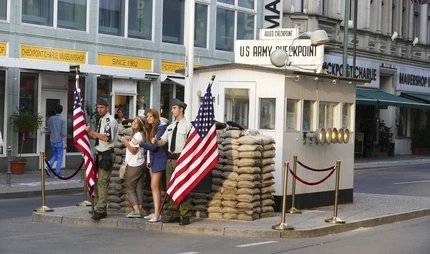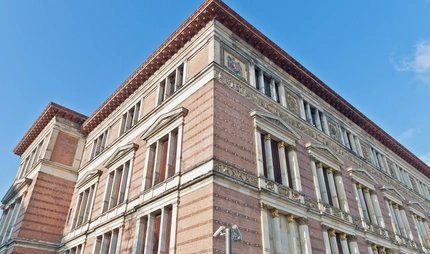
Topography of Terror
A place of remembrance on the site of the SS central command
Remembering terror and persecution – the documentation centre Topographie des Terrors is one of the most-visited places of remembrance in Berlin.
A place where terror is tangible, a place of remembrance and a warning from history, the “Topography of Terror” exhibition is located on the site where between 1933 and 1945 the principal instruments of Nazi persecution and terror were located: the headquarters of the Gestapo, the high command and security service of the SS, and from 1939 the Reich Security Main Office.
With more than two millions visitors each years, it is one of the most frequently visited museums and memorial centres in Germany.
The exhibitions on the site
The permanent exhibition Topography of Terror. Gestapo, SS and Reich Security Main Office on Wilhelm- und Prinz-Albrecht-Straße tells you about these institutions and the crimes that were organised there. At five locations, photographs and documents illustrate the history from the time the Nazis took power until the end of the war.
You will find out even more in the special and temporary exhibitions which deal with various aspects of national socialism, for example in the special exhibition "A Special Kind of Police Custody. The House Prison of the Secret State Police Office in Berlin 1933-1945.

A second permanent exhibition in the excavations along Niederkirchnerstraße, "Berlin 1933-1945. Between Propaganda and Terror", focuses on National Socialist policies in Berlin and their consequences for the city and its population. It shows how the National Socialists succeeded in gaining a foothold in Berlin and developing the city into the political centre of their rule. The exhibition can be visited all year round. The glass panels provide a view of the excavations on the grounds.
Tour of the site
The tour takes in 15 information stations directly where the crimes were planned. Photographs, graphics and documents provide detailed information. The site also contains the longest surviving section of the Berlin Wall in the centre of Berlin.
Dokumentationszentrum NS-Zwangsarbeit
The museum’s foundation also runs the Nazi Forced Labour Documentation Centre in Schöneweide on the site of a former labour camp.
Historic Wilhelmstraße
Many ministries of the Nazi state were located on nearby Wilhelmstraße in the former government quarter. 30 panels tell the story of the buildings.
History of the site
In the summer of 1933, the Gestapo began to use the Secret State Police Office as a so-called "house prison" for political prisoners. In the offices they interrogated and tortured the prisoners. Most of them were then transferred to prisons and concentration camps. The Gestapo imprisoned a total of 15,000 opponents of the National Socialist regime in the "house prison". The prisoners also included Georg Elser, members of the resistance groups of the Red Chapel, the Kreisau Circle and the July 20 resistance.
After the end of the war, the site lay fallow for a long time. It was not until 1987, at the 750th anniversary celebration, that an initially temporary exhibition was created, which quickly developed into a permanent project due to the great interest shown.
Barrier-free access
There is an audio induction loop system for the ticket office, the exhibition and the auditorium.
The Topography of Terror website contains special information for people with hearing and cognitive impairments (including information in sign language and plain language).
Audio guides and an app for the site tour are available. The app provides commentary in sign language and an audio version.
All rooms, facilities and exhibition areas are wheelchair-friendly. Assistance dogs (guide dogs, mobility assistance dogs etc.) are allowed in.
Barrier-free special guided tours are available for people with cognitive impairments.
Nearby attractions
- Martin-Gropius-Bau
- Abgeordnetenhaus des Landes Berlin
- Potsdamer Platz
- Historic Wilhelmstraße
- Checkpoint Charlie
- Museum für Kommunikation
- Deutsche Spionagemuseum
Information for groups
Guided tours for groups are available in various languages
Opening hours
Outdoor areas until dusk (at least 20 clock). The exhibitions are accessible for wheelchair users.



